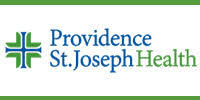- May 15,2018 | ISSN 1940-6967
- The National Association Of Medical Doctors
Featured Sponsors
America's Uninsured Rate Climbs To 15.5%
By Morgan Haefner
The number of working-age Americans without health insurance grew by an estimated 4 million since March 2017, according to the Commonwealth Fund's ACA Tracking Survey.
The U.S. uninsured rate among working-age Americans now rests around 15.5 percent, compared to 12.7 percent about a year ago. Lower-income families earning less than $61,000 saw the biggest jumps in uninsured rates when compared to 2016 numbers, according to the Commonwealth Fund.
The Commonwealth Fund attributed the increase to two factors: a lack of legislative fixes to the ACA's weaknesses and changes to the law initiated by President Donald Trump's administration. These include cutting ACA advertising and the open enrollment period for ACA marketplace coverage.
That being said, 11.8 million Americans enrolled in health plans on the ACA marketplace during the 2018 open enrollment period, only down about 1 million from 2016, prior to the Trump administration's changes.
Still, "signs point to further erosion of insurance coverage in 2019: the repeal of the individual mandate penalty included in the 2017 tax law, recent actions to increase the availability of insurance policies that don't comply with ACA minimum benefit standards, and support for Medicaid work requirements," according to the report.
Articles in this issue:
- Don't Trust Yelp Reviews For Physicians
- This Bill Will Drive Physicians Out of Practice in California
- 5 Reasons Physicians Are Cancelling Their Health Insurance
- America's Uninsured Rate Climbs To 15.5%
- To Combat Physician Burnout and Improve Care, Fix the Electronic Health Record
- 100 Million Americans Have Chronic Pain. Very Few Use One Of The Best Tools To Treat It.
- More Patients Are Taking Home Recordings Of Their Doctor Visits. But Who Else Could Listen?
Top Physician Opportunities
Journal of Medicine Sign Up
Get the Journal of Medicine delivered to your inbox.
In This Issue
- Don't Trust Yelp Reviews For Physicians
- This Bill Will Drive Physicians Out of Practice in California
- 5 Reasons Physicians Are Cancelling Their Health Insurance
- America's Uninsured Rate Climbs To 15.5%
- To Combat Physician Burnout and Improve Care, Fix the Electronic Health Record
- 100 Million Americans Have Chronic Pain. Very Few Use One Of The Best Tools To Treat It.
- More Patients Are Taking Home Recordings Of Their Doctor Visits. But Who Else Could Listen?
Archives
Masthead
-
- Editor-in Chief:
- Theodore Massey
- Editor:
- Robert Sokonow
- Editorial Staff:
- Musaba Dekau
Lin Takahashi
Thomas Levine
Cynthia Casteneda Avina
Ronald Harvinger
Lisa Andonis
Leave a Comment
Please keep in mind that all comments are moderated. Please do not use a spam keyword or a domain as your name, or else it will be deleted. Let's have a personal and meaningful conversation instead. Thanks for your comments!















*This site is protected by reCAPTCHA and the Google Privacy Policy and Terms of Service apply.